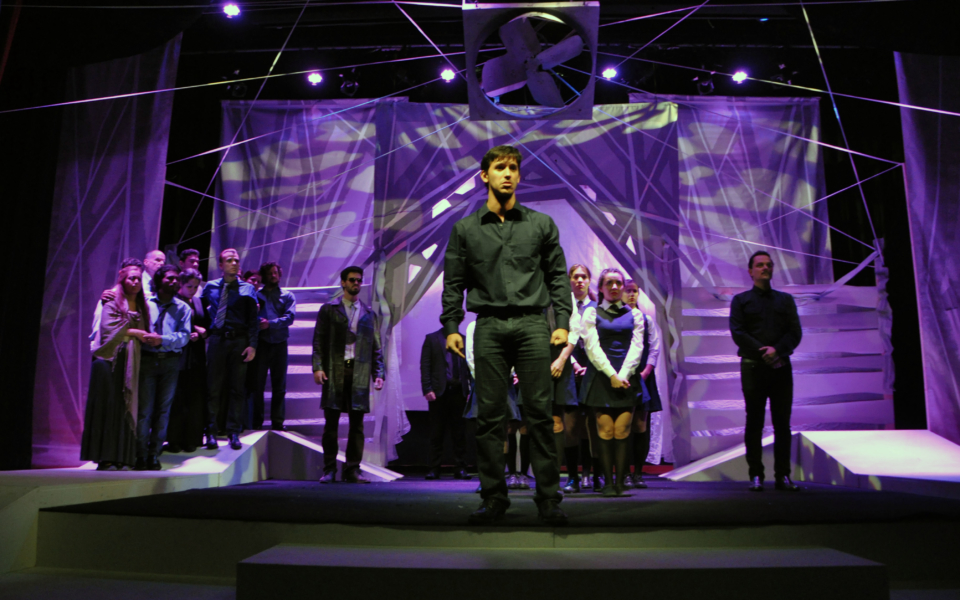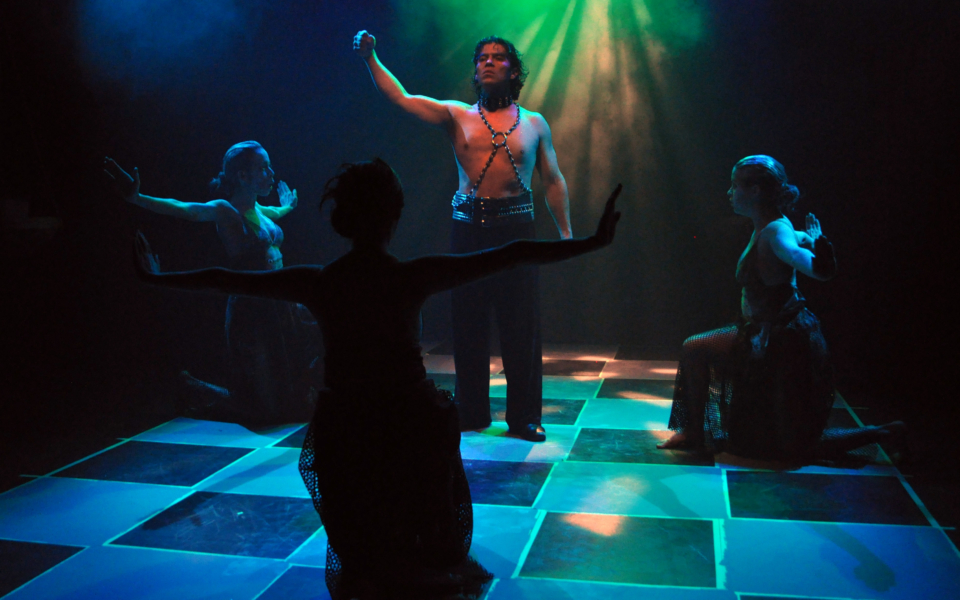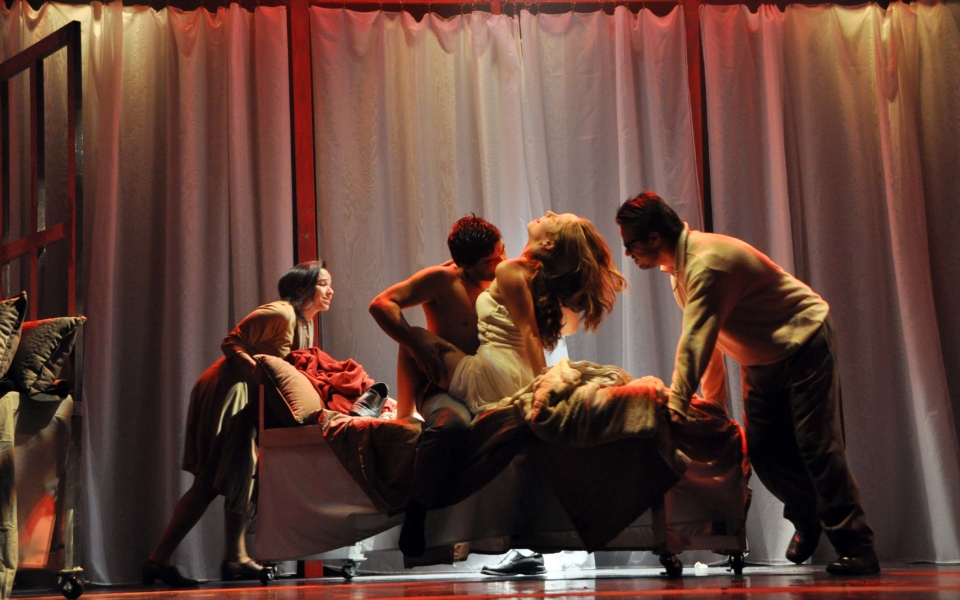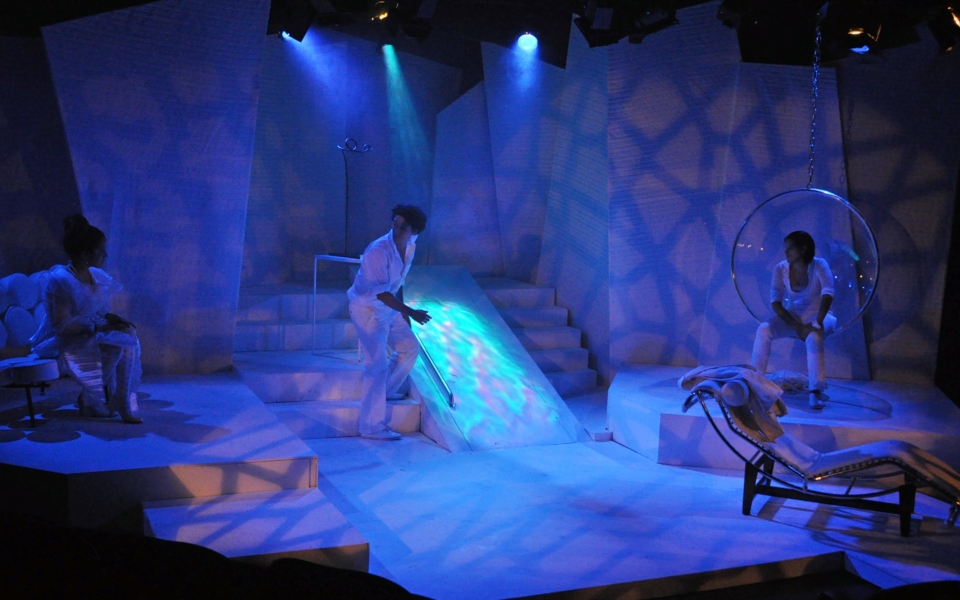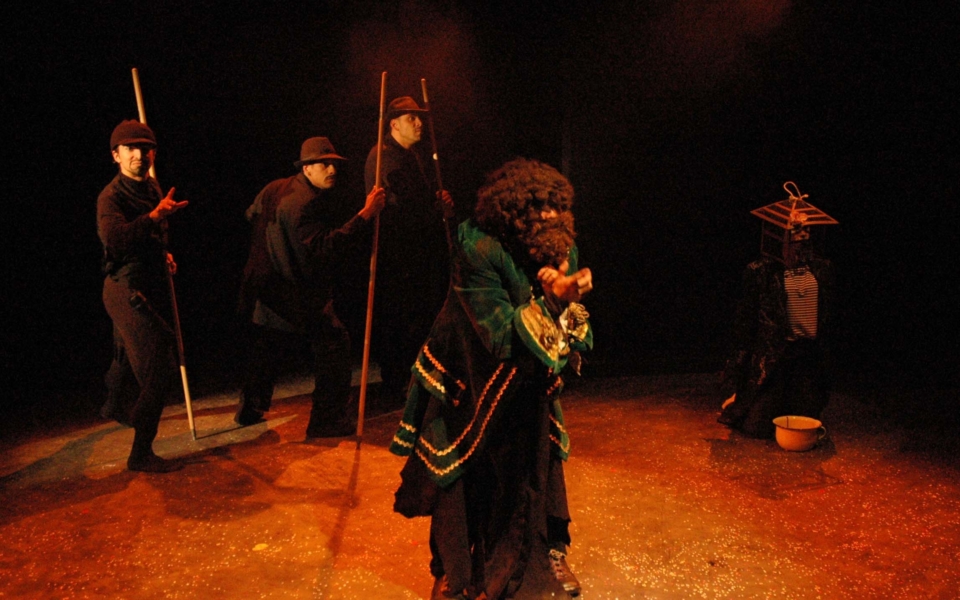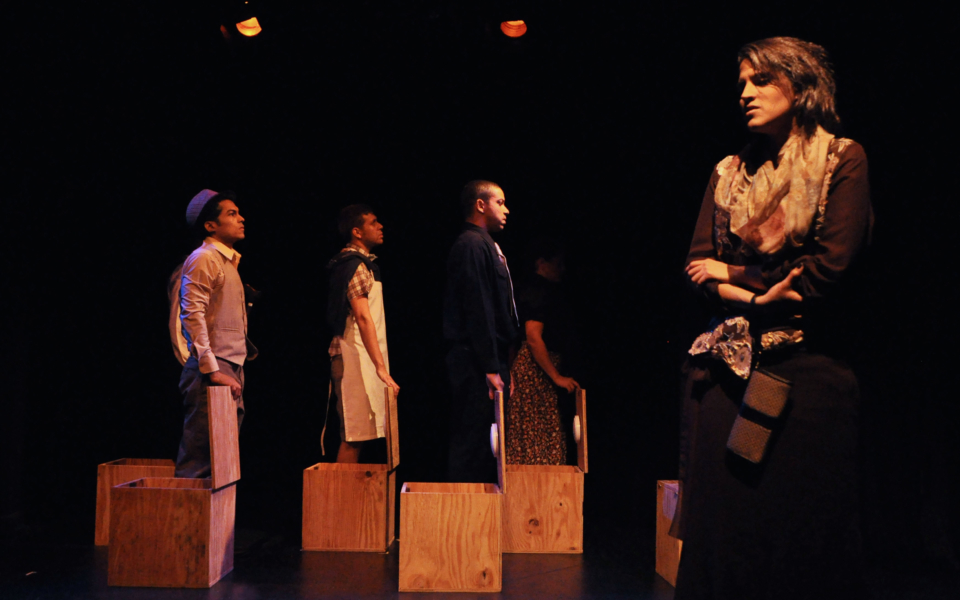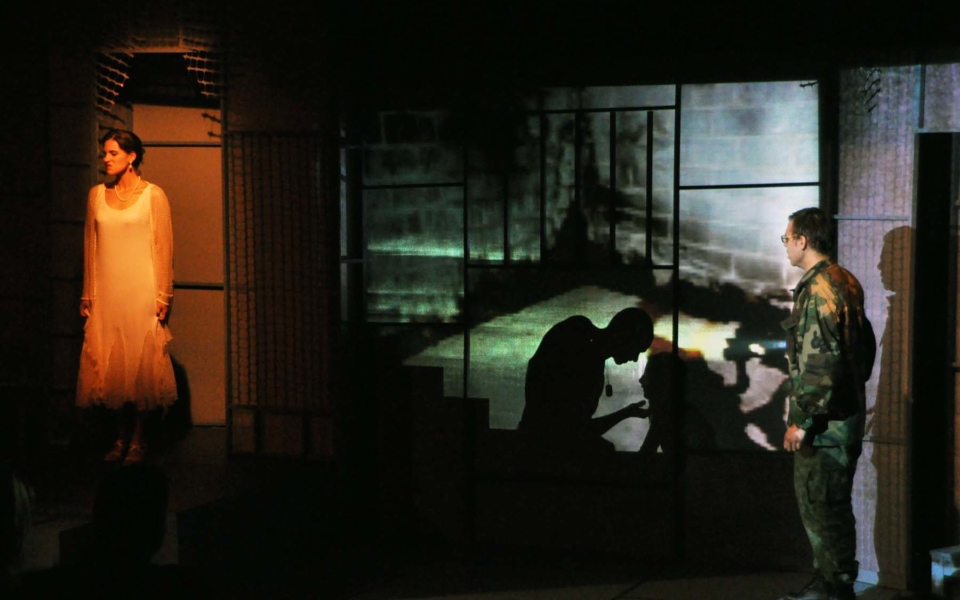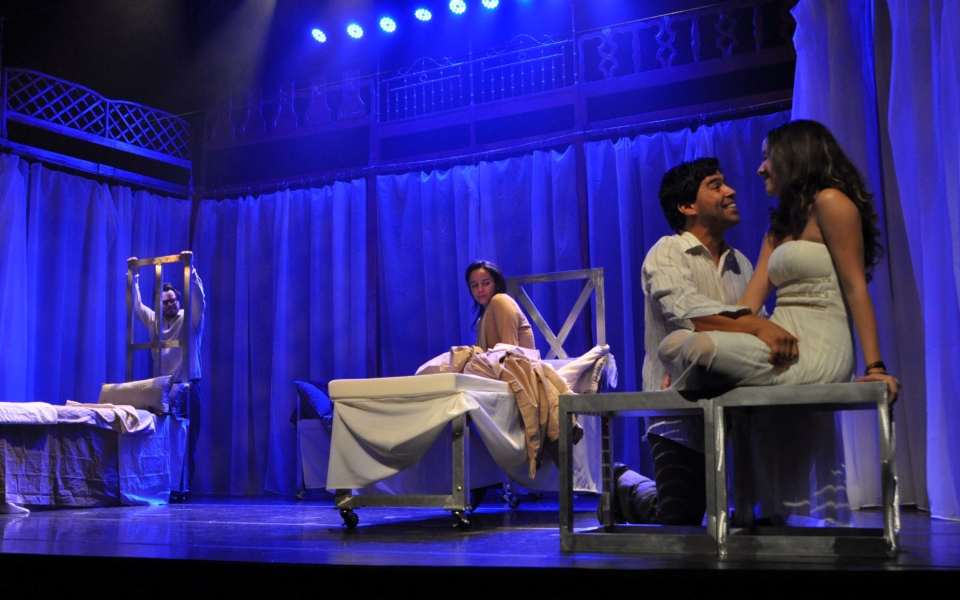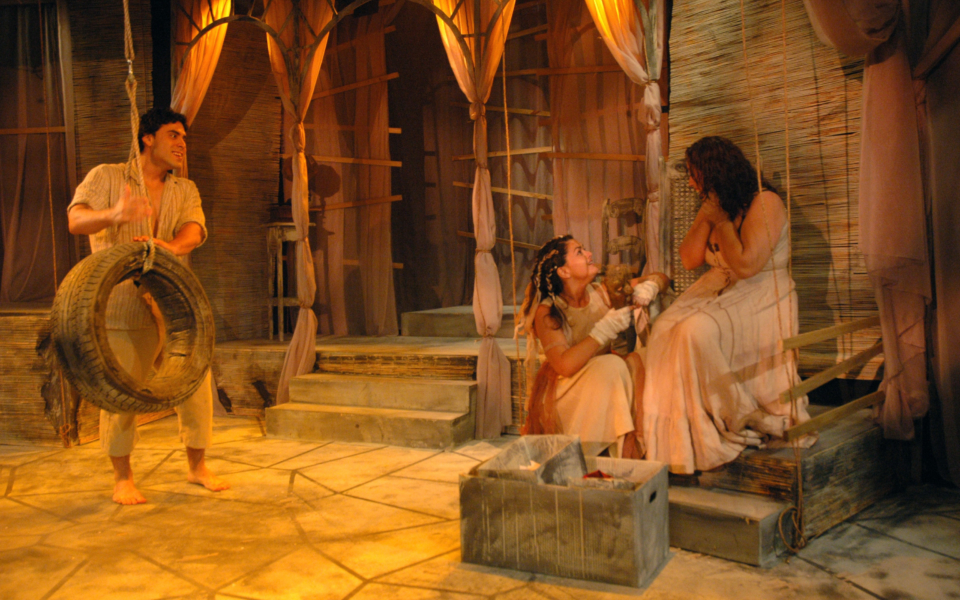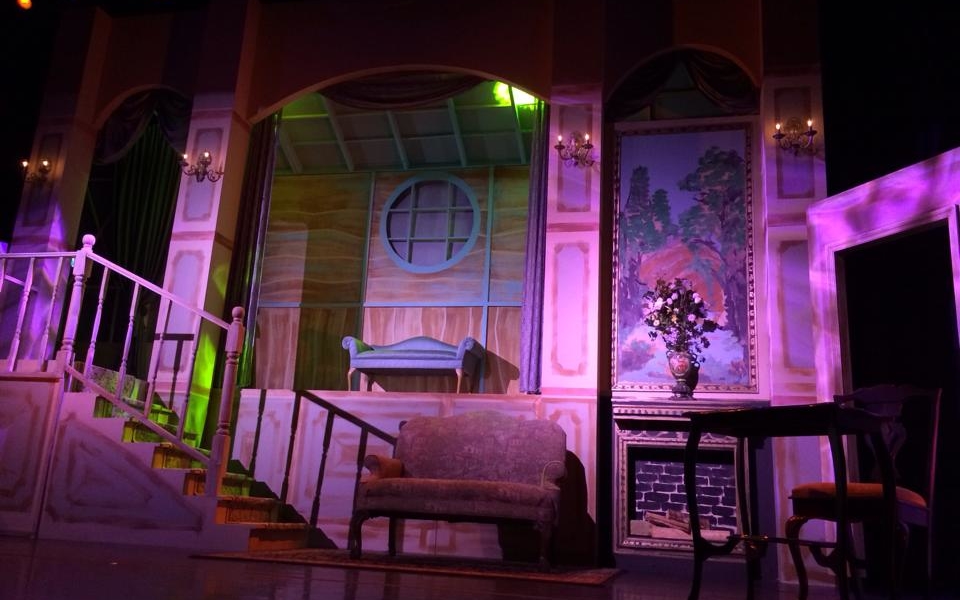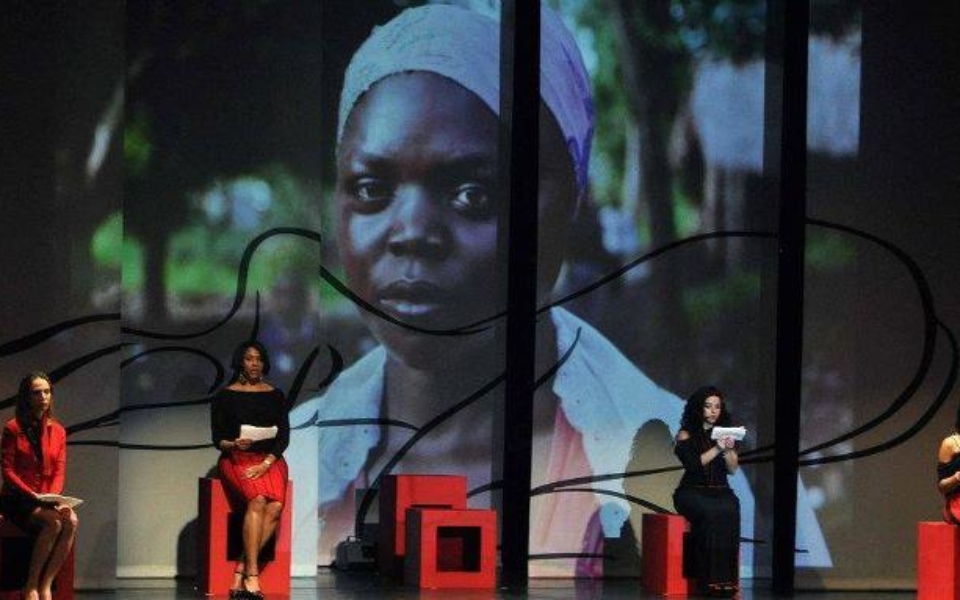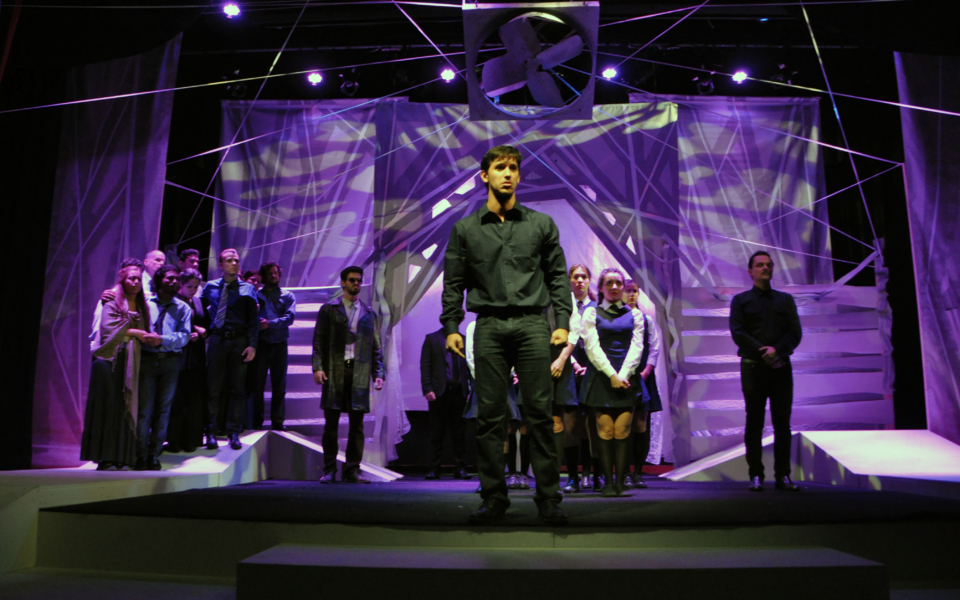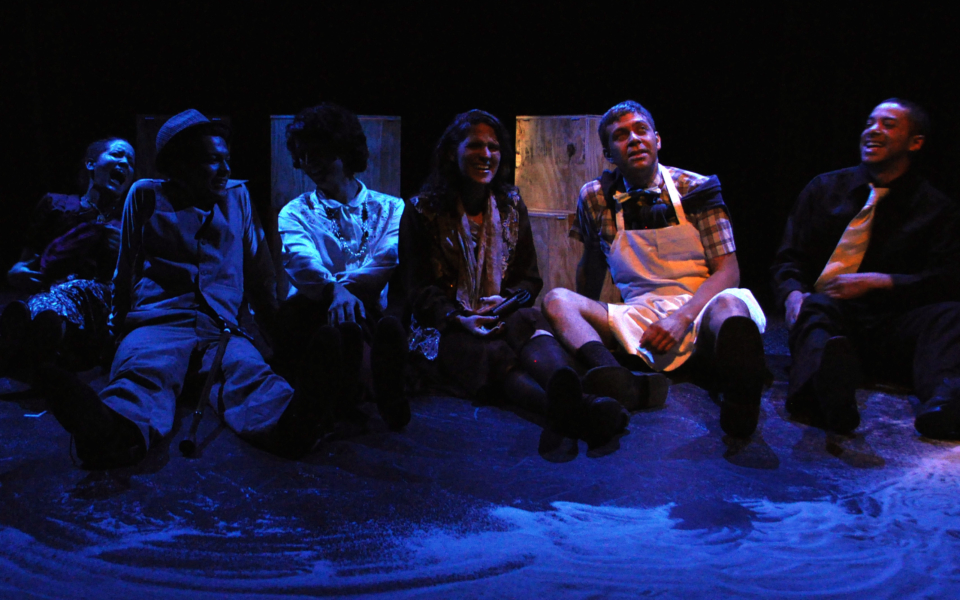
Anyone who has ever been to the theater can tell you just how important lighting can be in a play. The entire mood of a scene can change, merely with a change of lighting color or effect. But did you ever wonder how all this emotion is compressed and boiled down into just a few press photos that serve the invaluable purpose of selling tickets? Simply put, if nobody comes to the play, it doesn’t matter how great the production is. And so here we have the importance of lighting in theater marketing photography.
You may wonder why you would really need photographs of a theatrical performance? Everything from posters, to flyers, print ads, online ads, websites, and social media posts could benefit from photographs – basically any and everything that gets the production in front of potential ticket buyers. Press that may want to write about the performance can also benefit from images. Not every play will use photographs for all of these purposes; those decisions are left up to the play’s director and the art director or graphic designer, but it is always a good idea to have them on hand should the need arise.
Now, let’s talk some basics of photography. Photographs need light — even the most talented photographers are limited by this requirement. When you design lighting for a play, you’re designing the lights for the pleasure of the audience. When you’re designing lighting for marketing, you need to focus not on how the lighting looks to anyone in the theatre, but how the lights look through the camera. Typically, lighting for photographs is much brighter than what would be designed for the actual play.
Let’s get down to the fundamentals of lighting design.
A lighting designer is responsible for the design, installation, and operation of the lighting and special electrical effects used in the production. The lighting designer begins by reading the script to be produced noting the type of light it calls for in each scene. The designer and the play’s director share their ideas about how light could be used to enhance the production concept at their first meeting. Early meetings with the set designer are also important because the set and lighting designers must collaborate on how to achieve the desired “look and feel” of the play. The plan for the set may influence the placement and direction of the necessary lighting instruments, so flagging any potential problems in this area as early as possible makes sense.
But how does the lighting of a scene (or a photograph) evoke such a variety of emotions? Four properties lighting designers can control to create a vast array of effects:
Intensity. Simply put, the brightness of light. Everything in the range from the faintest dim glow to the most blinding glare can be created with stage lighting. Contrast has a great impact on how bright a light will appear to be to the audience, with a single flashlight on an otherwise dark stage appearing to be bright, while a strong spotlight shining on an already brightly lit stage may appear dim. A dimly-lit photograph may give the illusion of a dramatic or mysterious play, while a brightly lit photograph can help to give the feeling of a lighter play, or comedy.
Color. The color an object on stage appears to be is determined both by its actual hue and by the color of the light that illuminates it. Filters or gels on lighting instruments make it possible for designers to tint stage lighting in colors that flatter the actors’ faces, cast a warm glow over an entire set or heighten the colors of scenery and costumes. Imagine a play with a violent scene – you may want to light some marketing photographs with a red gel to give a dramatic illusion. Whereas if the play is a light-hearted comedy set on a sunny beach you might opt for a blue or amber gel.
Distribution. Light can be distributed in different ways on stage. The form of light may vary from a soft unfocused glow to a sharply defined beam that casts dramatic shadows. The beam of light from an instrument may be directed through a piece of metal called a gobo that shapes it into a pattern such as the broken effect of light coming through the leaves of trees. Light may also be directed at an object from any angle, giving rise to an infinite variety of light and shadow combinations, each with a different look and feel.
Movement. The intensity, color and distribution of light can be noticeably altered as quickly or slowly as the lighting designer and director deem fit while the play is being performed. For example, a scene that starts in the diffuse and rosy light of dawn can end in the brilliant golden beams of full morning light. This capacity for change over time is called the movement of light. It offers a kind of flexible expressiveness that is unmatched by any of the other visual elements of production.
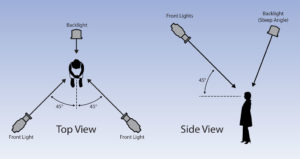 In addition to the lighting properties and effects, the position of the lights is also important. The basic front light setup is all about 45° angles. There are two lights shining down from a 45° angle above the actor. On the horizontal plane, these two lights are 45° to the left and to the right of the actor. This is helpful in marketing photographs to be able to light the actor in a different color or brightness than the background. Remember you are translating a three-dimensional play onto a two-dimensional photograph. Sometimes positioning of actors on the stage and the kind of lighting needs to be exaggerated to achieve this goal.
In addition to the lighting properties and effects, the position of the lights is also important. The basic front light setup is all about 45° angles. There are two lights shining down from a 45° angle above the actor. On the horizontal plane, these two lights are 45° to the left and to the right of the actor. This is helpful in marketing photographs to be able to light the actor in a different color or brightness than the background. Remember you are translating a three-dimensional play onto a two-dimensional photograph. Sometimes positioning of actors on the stage and the kind of lighting needs to be exaggerated to achieve this goal.
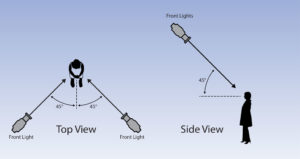 you add a light above and slightly behind the lighting area, you can create a backlit effect. The backlight appears to outline the actor and helps them stand out from the background. This is helpful in marketing photos to give three-dimensional depth on a two dimensional photograph.
you add a light above and slightly behind the lighting area, you can create a backlit effect. The backlight appears to outline the actor and helps them stand out from the background. This is helpful in marketing photos to give three-dimensional depth on a two dimensional photograph.
In conclusion, those are the basics to creating memorable photographs to market a theater production. Reducing an entire three-dimensional plays with sound and movement into a still photograph is not easy, but the end result can be rewarding. If you use these guidelines, have a little patience and work with the play’s director, you can set up some powerful photographs to help drive ticket sales.
